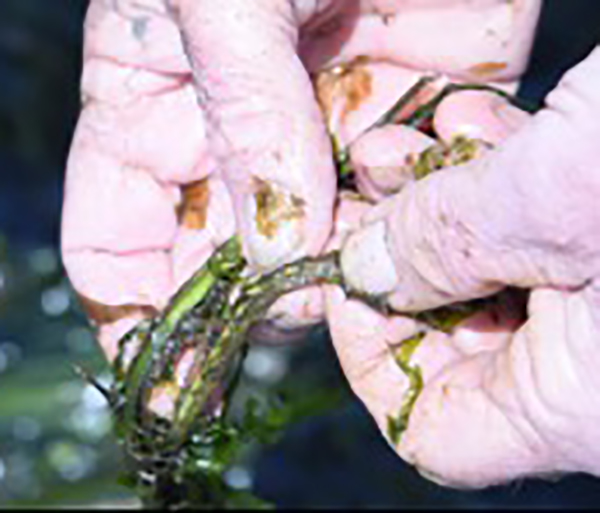Disappearance of eelgrass (
Zostera marina) might seem like a trivial topic to some, but it is actually quite a concerning phenomenon. Marine organisms and humans alike rely on the multitude of ecosystem services provided by eelgrass, such as water filtration, erosion control, carbon storage, and habitat for cultural and commercially important species (Phillips 1984). Putting this in an economic context, it is estimated that one acre of eelgrass is worth $12,325 (Carlisle 2004). In other words, eelgrass decline is our canary in the coalmine; if not restored, further damage could lead to bigger issues.
In the San Juan Islands, eelgrass began to disappear at several sites in the early 2000s (Wyllie-Echeverria et al. 2003). This decline carried with it major environmental and economic costs for nearshore fisheries such as the loss of spawning sites for Pacific Herring, which impacted that fishery and deprived Chinook salmon of prey. By extension, the Southern Resident Killer Whale population was also affected due to declining Chinook salmon. Such a trophic cascade is unfortunately common when eelgrass populations begin to disappear (Phillips 1984).
It can be clearly seen that eelgrass is a vital component to both marine ecosystems and to human wellbeing and culture. Previous attempts at restoration have typically involved the harvest and relocation of adult plants. While effective in some scenarios, this practice is time consuming, costly, and is not effective for large scale restoration programs (Marion and Orth 2010). The question is, what can be done to restore eelgrass beds throughout the Salish Sea in a cost effective and ecologically efficient way?

To understand how large-scale restoration might be achieved, it is vital to understand eelgrass itself. Much like annual bluegrass, eelgrass is a flowering plant. In the spring, eelgrass flowering stalks begin developing. As the weather warms, males release their pollen to fertilize females and seed development begins (Figure 1). When seeds are mature they are released in late summer and early fall (Phillips 1984).
Fig 1: Developing eelgrass seeds in mid July 2020.
Released seeds have many dispersion pathways. They can drop to the sediment close to the parent plant, be transported via an uprooted flowering stalk to a more distant location, carried by waterfowl, or transported by gas bubbles (Pickerell et al. 2005). Once released, seeds must reach the seafloor in a suitable environment in order to germinate. This commonly happens in early spring and if conditions are right, after germination seedlings begin to grow and clonally spread in their new environment (Phillips 1984).
Scientists realized that dispersal of seeds into areas where eelgrass had disappeared could be a promising, simpler and more cost-effective ecological restoration method than transplanting adults. This method involves harvesting flowering stalks before seed release, and spreading seeds in submerged habitat previously occupied by eelgrass. Over time, this restoration practice resulted in eelgrass return at some experimental sites (Marion and Orth 2010, Boyer and Wyllie-Echeverria 2010).